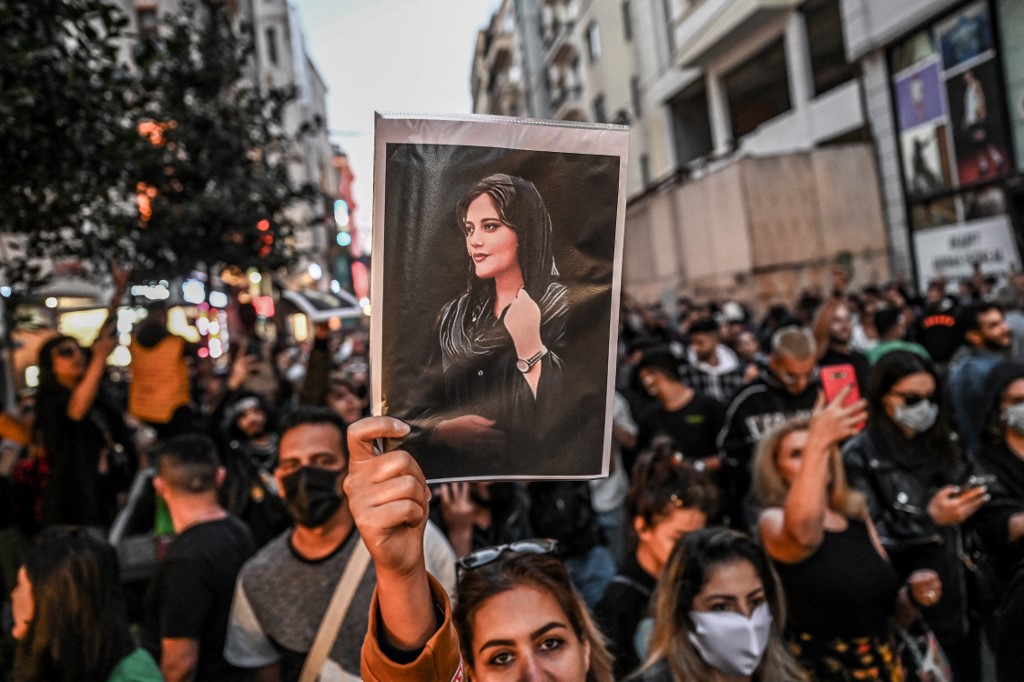Türkmen Terzi
The Iranian regime has in the past faced mass unrest due to the country’s strict hijab laws. This time, however, the nationwide protests have been transformed into ethnic clashes. Iran’s mullah regime has been suppressing the Kurdish minority since protests began following the death of Mahsa Amini, a 22-year-old Kurdish-Iranian woman, while in the custody of Iran’s morality police in Tehran.
According to statistics, there are over 18 million Turkic-speaking Azeris, 4 million Kurds, some 3 million Arabs and roughly 1.4 million Baluchis living in Iran. In addition to these primary ethnic minorities, a small number of Baha’i, Turkmen, Christian and Jewish communities reside in the country, with all these non-Persian minorities making up almost half of Iran’s population.
Iranian Azeris and Kurds are two large ethnic groups that are seeking autonomy or independence in Iran. While Turkey and Azerbaijan have historically had close ties with Iranian Azeris, the US government and European Union members have supported Syrian Kurds in their fight against ISIS. Washington also condemned Iran’s attack in the Iraqi Kurdistan region.
The Kurds are an ethnic group living in a mountainous region spanning southeastern Turkey, northern Iraq, northern Syria, northwestern Iran and Armenia.
Iranian Azeris are predominantly Shia, and the Iranian regime considers them to be among the state’s most loyal communities. The rulers of the Safavid Empire, which ruled in Iran from 1501 to 1736, were Azeris, while the Qajar Dynasty of Turkic origin ruled Iran until 1925. The Azeri community resides mainly in northwest Iran along the border with Azerbaijan and in Tehran. Many Azeris still consider and call Iran’s northwest region “Iranian Azerbaijan.” While today’s Azerbaijan was under the Union of Soviet Socialist Republics (USSR), the Soviet Union created the Azerbaijan People’s Government in northern Iran, but the autonomous state was short-lived, lasting only from November 1945 to December 1946. Therefore, during the rule of the former shah and under the current rule of the Islamic Republic, Iran has implemented assimilationist policies for Azeris and does not allow them to receive education in their mother tongue, presumably to prevent the growing Azeri nationalist sentiment in the region from expanding further.
However, the independence of Azerbaijan, following the collapse of the Soviet Union in 1991, inspired Iranian Azeris, who are mainly Shia but have strong ethnic and cultural ties to Azerbaijan. The other concern for Iran is that Azerbaijan has been fighting with Armenia for the last 30 years. Iran maintains a good relationship with Armenia and has traditionally sided with Yerevan in its conflicts with Azerbaijan. For Iran, Azerbaijan’s war with Armenia taking place in such close proximity is a security concern. Azerbaijan’s former president, Abulfaz Elchibey, who ruled the country in the early 1990s, had expressed the desire to reunite Azerbaijan with Iranian Azerbaijan. This is one of the reasons the Tehran government has backed Armenia for the last three decades. Furthermore, for Armenia’s population of 3 million, the Iranian border is critical for trade. Support for Azerbaijan among Iranian Azeris is growing since Azerbaijan is in conflict with Armenia over the disputed region of Nagorno-Karabakh, inhabited mainly by ethnic Armenians. Iran does not want Azerbaijan to take over more territory since Tehran is intent on maintaining its 44-kilometer (27-mile) border with landlocked Armenia.
Iranian Azeris are still largely loyal to Iran’s mullah regime, but the Tehran government is deploying the Islamic Revolutionary Guard Corps (IRGC) to Iran’s northern border with Azerbaijan. Iranian Azeris can take advantage of the chaotic situation in the country, but Iran’s Kurdish groups are already involved in demonstrations concentrated in Kurdish-majority cities. Iranian state media reported in September that the IRGC hit the headquarters of the Komala Party, the Democratic Party of Iranian Kurdistan (IKDP), and the Kurdistan Freedom Party (PAK) in northern Iraq, with missiles and drones. The Kurdistan Regional Government (KRG), the official executive body of the autonomous Kurdistan region of northern Iraq, reported at the time that seven people were killed and 28 wounded during the attacks. These ethnic parties of Iranian Kurds have been fighting against the Iranian regime for Kurdish rights.
Turkey has been more concerned about the activities of the outlawed Kurdistan Workers’ Party (PKK) and its Iranian affiliates, the IKPD and the Kurdistan Free Life Party (PJAK), since the beginning of the protests. The PKK is an armed group that has waged an insurgency since 1984 against Turkish authorities for an independent Kurdish state or autonomy for Kurds within Turkey. PKK members from Iranian Kurdistan founded PJAK in 2004, and the armed group killed 120 members of the Iranian security forces in 2005. In a statement on Oct. 17, Siyamend Mouini, the co-chair of PJAK, called on all Kurds to join forces in supporting the protests.
The situation in Iran is worsening, with the international media reporting that the Iranian regime has thus far arrested almost 12,500 people and killed nearly 250 since the beginning of the street protests on Sept. 16. Iran and Turkey are rivals, with both countries competing for regional influence, but when it comes to the Kurdish threat, the two countries find a way to collaborate. Iran’s targeting of Kurdish political parties in northern Iraqi cities will unite Kurdish groups in Syria, Iraq, Iran and Turkey. Iran and Turkey are likely to face a greater security threat from armed Kurdish groups in the coming years.

